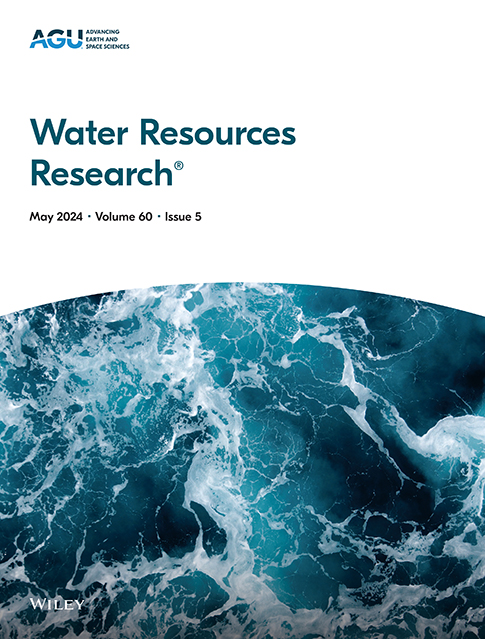Hindcasting Maximum Water Depths in Coastal Watersheds: The Importance of Incorporating Off-Channel Data and Their Uncertainties in Machine Learning Models
IF 4.6
1区 地球科学
Q2 ENVIRONMENTAL SCIENCES
引用次数: 0
Abstract
In the absence of adequate observations on the off-channel areas, flood models are typically trained and validated against stream water depths. This approach can be efficient for physics-based models, which incorporate the underlying physical processes, but the efficiency for data-driven models like machine learning (ML) algorithms is unclear. The existing off-channel observations like high-water marks (HWMs) are also subject to uncertainty. This paper addressed three research questions: (a) how useful are ML models, trained with stream gauges, for hindcasting water depths in the off-channel areas? (b) how does incorporating the uncertainty of HWMs improve the model performance? and (c) does the uncertainty incorporation improve the model transferability to other watersheds and events? To answer these questions, we evaluated the performance of ML models across three large coastal watersheds in the US during three hurricanes—Michael, Ida and Ian. The model was developed under three scenarios, which differed in terms of the flood observational data (stream gauges and HWMs) used for their training and validation. A loss function was proposed to incorporate the uncertainty of observations. We found that ML models trained solely by stream gauges performed well only for stream hindcasts. Satisfactory hindcasts on off-channel areas were obtained by incorporating the HWMs' uncertainty via the loss function. This uncertainty incorporation reduced the model bias and resulted in the best transferability to other coastal watersheds and flood events. Our study provides insights about developing transferable ML models for hindcasting water depths on streams and off-channel areas in coastal watersheds during extreme events.求助全文
约1分钟内获得全文
求助全文
来源期刊

Water Resources Research
环境科学-湖沼学
CiteScore
8.80
自引率
13.00%
发文量
599
审稿时长
3.5 months
期刊介绍:
Water Resources Research (WRR) is an interdisciplinary journal that focuses on hydrology and water resources. It publishes original research in the natural and social sciences of water. It emphasizes the role of water in the Earth system, including physical, chemical, biological, and ecological processes in water resources research and management, including social, policy, and public health implications. It encompasses observational, experimental, theoretical, analytical, numerical, and data-driven approaches that advance the science of water and its management. Submissions are evaluated for their novelty, accuracy, significance, and broader implications of the findings.
 求助内容:
求助内容: 应助结果提醒方式:
应助结果提醒方式:


